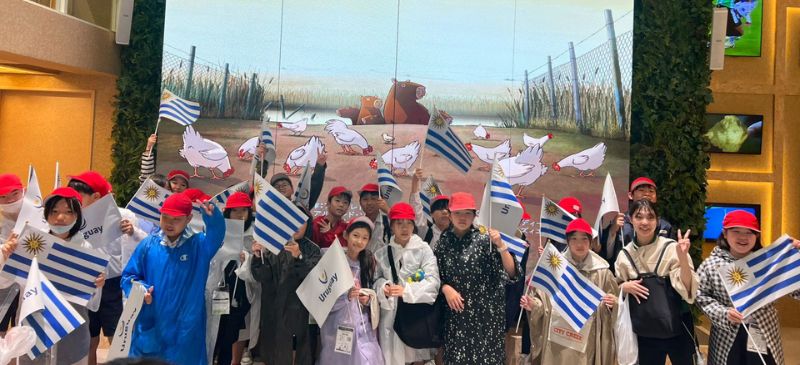- Home
- About us
- News
- Events
- EXPORT Export
-
BUY
Buy
BuyBuyFood and beverage Beef Caviar Dairy Products Fruits Healthy foods Olive oil Processed Foods Rice Sweets, honey and jams Wines ICT Software development Technology products
- INVEST Invest
- COUNTRY BRAND Country Brand
-
INFORMATION CENTER
Information center
InformationCenterInformationCenterReports Country reports Department reports Foreign trade reports Product-Destination worksheet Sectors reports Work documentsStatistical information Classification Uruguay XXI Exports Imports Innovative National Effort Macroeconomic Monitor Tools Buyers Exporters Investors
- Contact
-
Languages
The short film Los Carpinchos, by Alfredo Soderguit, conquered Japan at Expo Osaka 2025

Los Carpinchos, the animated short film by Alfredo Soderguit, became one of the most acclaimed cultural highlights of the Uruguayan pavilion at Expo Osaka 2025, marking a new step in the internationalization of Uruguay’s audiovisual talent.
The screening was part of the cultural program coordinated by Uruguay XXI for Uruguay Audiovisual, aimed at opening new markets for the country’s creative production. The piece, inspired by Soderguit’s book of the same name —translated into 17 languages, including Japanese—, was chosen for this global stage for its uniqueness: a visual story without dialogue, subtitles, or narration, capable of conveying its message of empathy and respect for diversity without language barriers.
The result was an immediate connection with the audience, including Japanese school students, who saw in the friendship between capybaras and hens a reflection of coexistence between cultures.
The impact went beyond the screen. After each screening, the audience received the Japanese edition of the book as a gift —a gesture that not only extended the emotional experience but also positioned Uruguayan children’s literature in a highly competitive and demanding market.
The screening in Japan represents a milestone in the export journey of Soderguit and his production company, Estudio Palermo. Co-produced with France and Chile, the piece has already won awards at international festivals such as the New York International Children’s Film Festival, PIAFF in Paris, and Chilemonos in Santiago, and was part of the prestigious official selection of the Annecy Festival 2025.
Uruguayan Alfredo Soderguit is a key figure in Ibero-American animation. With a career spanning more than 20 years as an illustrator, director, and producer, his work has reached platforms such as Netflix and HBO and has received prestigious global distinctions. His book The Capybaras was also awarded the renowned White Raven label, granted by the Internationale Jugendbibliothek in Munich.
